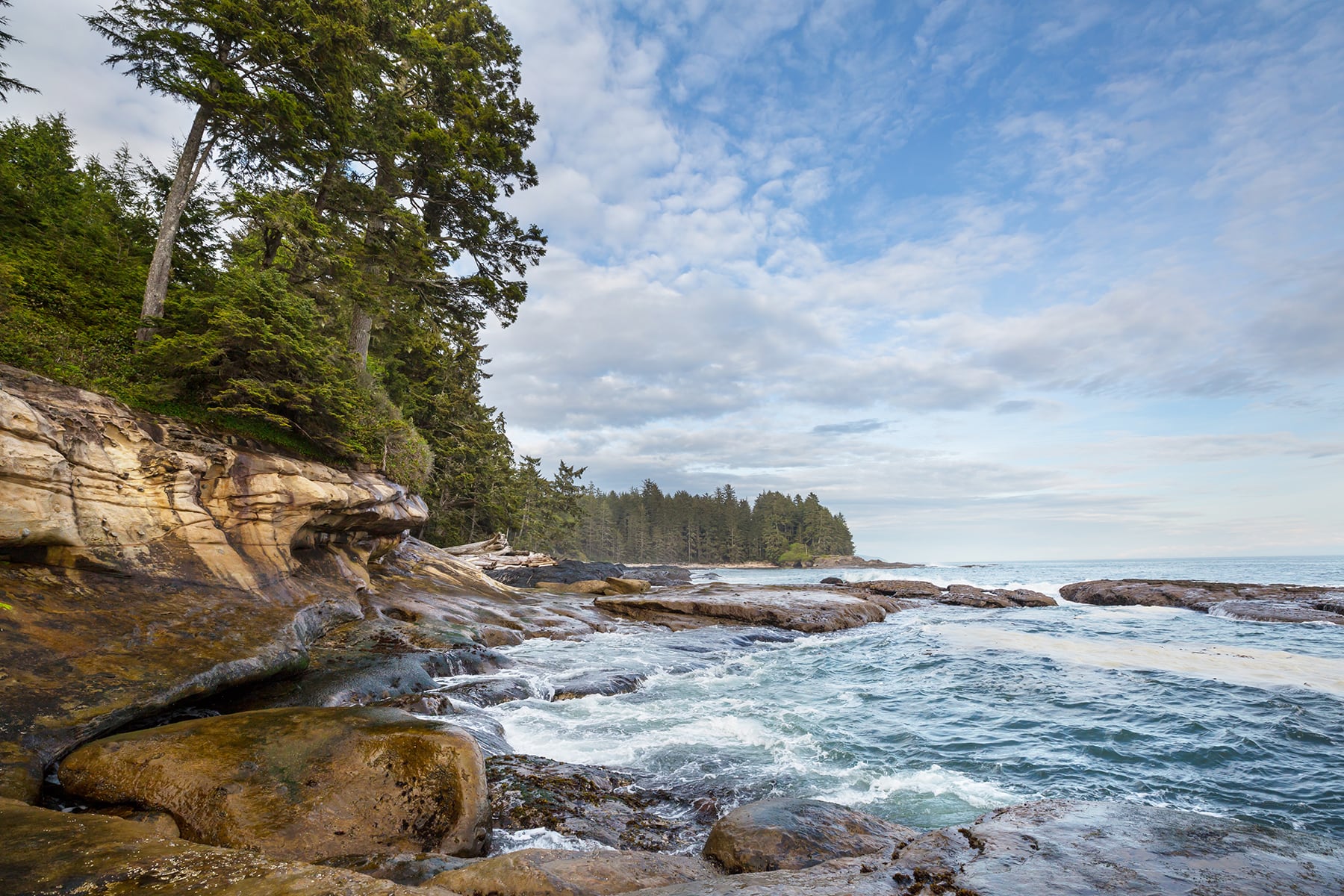
Water, so much a part of what attracts millions of tourists every year, can also be a major challenge to residents.
Whether in the form of appliance failures and leaks, flood damage, pipe and sewer backup damage or structural flaws, excess rain can cause water damage with little warning. Having a preparation plan to limit water damage fast is vital. Water damage that gets addressed in the first 48-hours is crucial to mitigation. Otherwise mold and rot can set in and may not be covered by homeowners insurance.
The Ultimate Guide To Preventing and Recovering From A Water Damage Disaster on Vancouver Island is designed to provide you expert advice from the most trusted and professional home restoration team in the region. We will outline the ways you can protect your home from water damage and how to restore your home to its former glory should water damage occur.
Section I: Prevention and Proactive Planning
How to avoid water-related catastrophes?
As a homeowner you don’t want to sit back and hope for the best. You want to do everything in your power to be both responsible and proactive in protecting your valuable Vancouver Island home from water damage. Here is a list of best practices and standard operating procedures we've developed serving Vancouver Islanders since 1983.
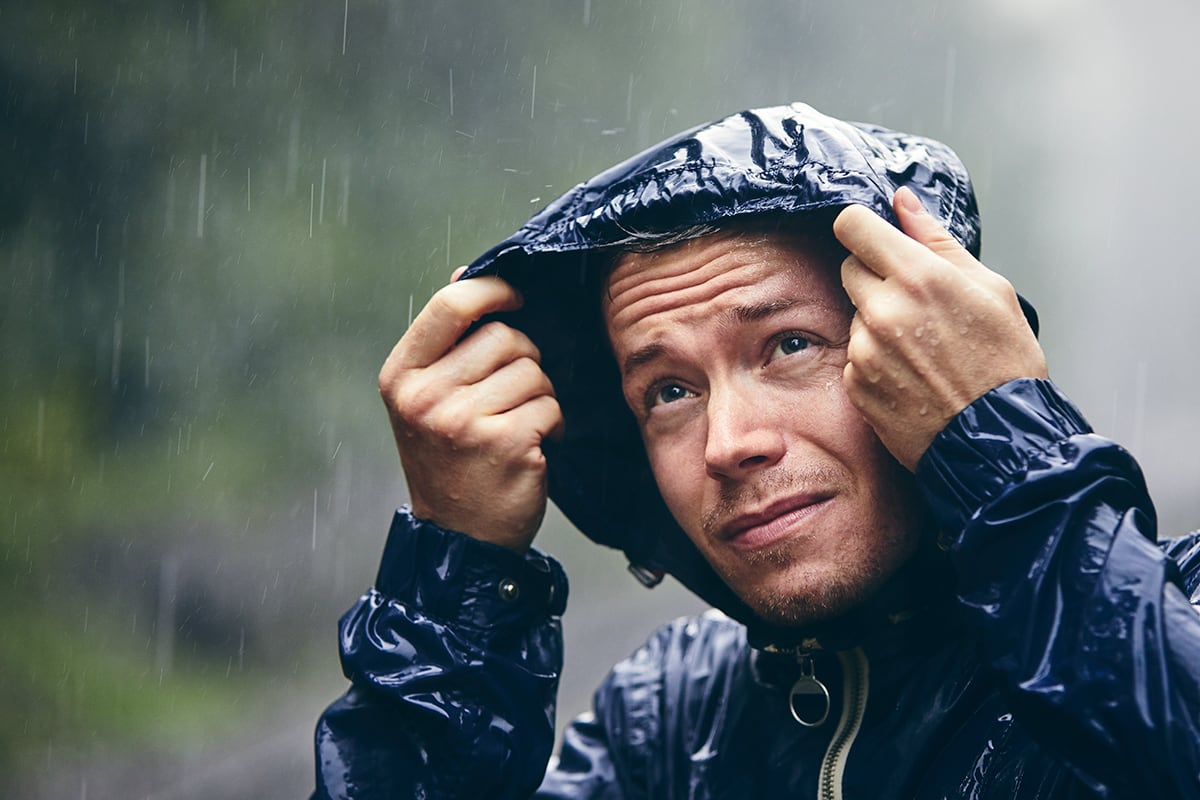
What Are The Main Sources of Water Damage?
Here are the key culprits for water damage, some of which you can prepare for by being proactive and by completing regular maintenance on your home:
- Faulty appliances
- Flash flooding
- Leaky roof
- Fire sprinklers
- Burst pipes (often caused by frozen pipes)
- Broken water mains
- Sewage backups
How Do I Protect My Valued Possessions From Water Damage?
The first thing you need to do to protect your home from water damage repair is do a comprehensive review of your property. Scrutinize where water might come in, assess the risk of leaks and other forms of damage. We recommend keeping your most valued possessions, either of sentiment or financial value, away from high water risk areas. Using plastic totes/bins and keeping them off the ground will protect the contents.
Higher risk locations for water damage
In general because of the geology and topography of the Island, we have issues that many mainlanders don’t have to contend with. Crawl spaces are common in the construction of homes on Vancouver Island and can be a hidden problem for water damage. In addition, crawlspaces, basements, garages, sheds and rooms below ground level are often a part of your home to experience water damage in an emergency. These spaces aren’t always as well ventilated as other parts of the home and can contain moisture that increases the risk of mold. The bottom line is to keep your valuables and items of deep, personal meaning away from these areas whenever possible. During a storm, flash flood or other high water event consider storing your most valuable items in waterproof bags or plastic totes.
Appliance care and maintenance
The most likely cause of water damage emergencies is faulty appliances. From human error to regular wear and tear, there are many ways a fridge, hot water heater, dishwasher, washing machine etc can result in water damage. Not only are these failures usually not covered by insurance they may not be noticed until it’s too late. Hot water heaters are notorious for causing damage and should be replaced every 10 years or so. Also make sure to check hot water pans regularly. Dishwashers, washing machines and refrigerators often have internal or hidden plumbing that can crack or break. Do ensure any cleaning or maintenance is done with care and any leaks are dealt with immediately. Where possible it’s better to connect your appliances directly to the outlet than to use power bars which can fail and cause leaks.
Snake drains once a year
Interior drains like sinks and showers are often problem spots in your home. A blocked drain can turn a heavy rainfall into a deluge of water within minutes. As part of your annual maintenance, we recommend snaking all major drains, including your exterior/perimeter drains. If you’re handy and have the right equipment this is something you can do yourself. However, if you do discover significant blockages you may want to contact a professional service provider.
Low temp and high water alarms
When it comes to mitigating water damage, speed is of the essence. Low temperature alarms will alert you when certain areas of your home dip below freezing, a potential cause of frozen and bursting pipes. High water alarms emit a high frequency sound should water reach a predetermined level. These days they are often bluetooth and wifi enabled so you can receive alerts directly to your phone. While both battery and outlet powered alarms exist, only the battery operated will work in the event of a power failure. As part of your water damage prevention plan, we highly encourage you to have these alarms installed.
Get a sump pump
Sump pumps are water extraction systems that facilitate water removal from a basement or ground floor location to an outdoor drain. They stop water build up and can save your property from permanent damage. Sump pumps are common yet not everyone makes the investment. For the new homeowner, the $1000-$3000 price tag for materials and installation might seem high. However, since your insurance deductible may be as much as $1000-$2500 or higher for water damage, the investment of a sump pump is usually prudent. One downside of a sump pump is they usually run on electricity so you’ll need a backup battery in case a water event is accompanied by a power outage.
Heavy rainfall prep
Homeowners should ensure that the landscaping around your house slopes away from the foundation even if it is a gentle decline. In addition there are some specific steps to take to safeguard your Vancouver Island home during heavy rainfall. During a recent high rainfall event, the BC government put out this advisory including some tips for homeowners to protect their property:
“Protect your home from potential floods by clearing out gutters, maintaining perimeter drains, making sure downspouts are far enough away from your residence and checking that nearby stormwater drains on your street are free of leaves and blockage.”
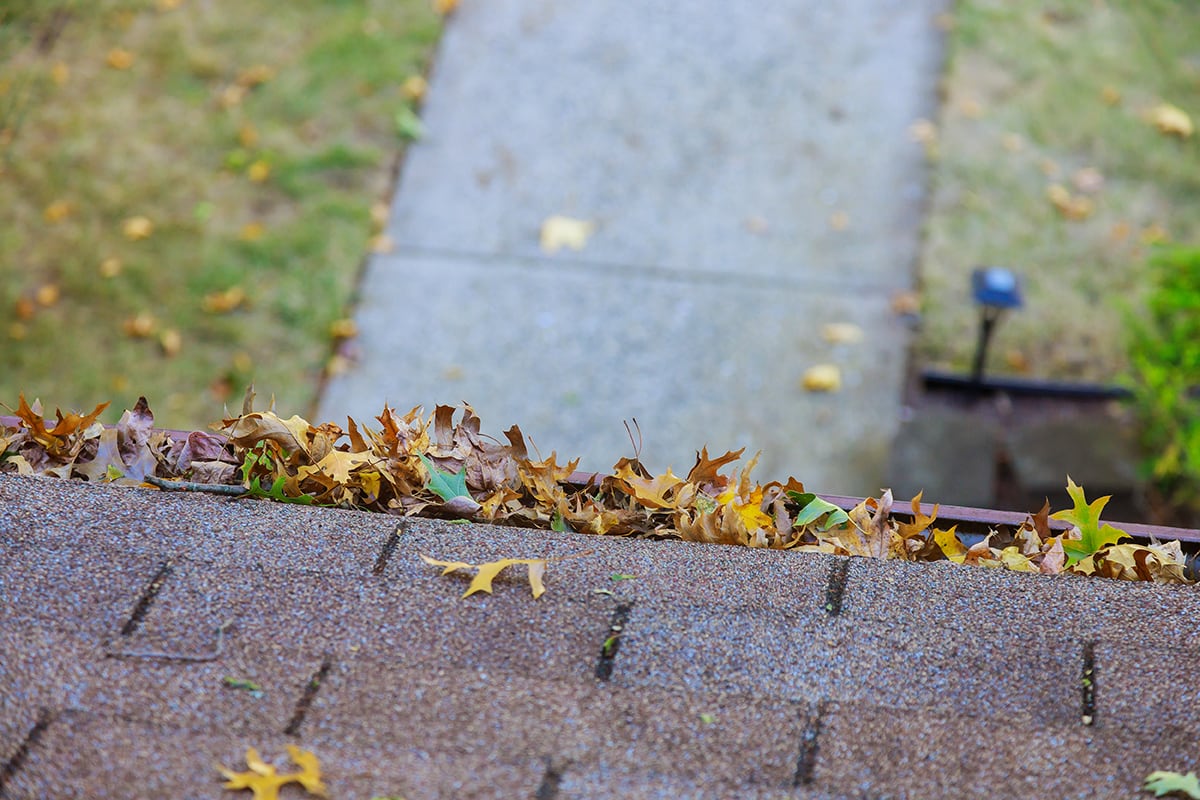
Clean eavestroughs every 6 months
Eavestroughs, aka gutters, should be cleaned at minimum twice per year. Most experts recommend doing so in the spring and fall. Failure to do so can lead to water leaking through your roof, a major failpoint that can lead to significant damage.
Window well cleaning in spring and fall
Similar to eavestroughs, window wells can accumulate leaves and other debris in the course of a season. We encourage homeowners to clean at least twice per year to avoid water damage.
Inspecting perimeter drains
Depending on the age and materials of your drain you should be having them cleaned and inspected at least once a year. If you have new drains made from pvc pipe you can extend this to once every second or third year.
Protecting your home when you go on vacation
There’s nothing worse than coming back from a relaxing vacation only to find your house full of water. Here’s a quick checklist you can use to protect your home from water damage when you’re away:
- Shut off the main water valve to your house. If you shut off the water supply to your hot water tank, be sure to shut off the water tank to prevent damage from overheating.
- Test your appliances and fixtures for any leaks or damage. As we mentioned above it’s better to plug your appliances into the wall outlets as power bars can fail and cause leaks.
- Test your sump pump and ensure you have a battery backup in case of a power outage
- Leave your heat on to make sure your pipes don’t freeze if you’re travelling during the winter months
- Consider hiring a house sitter or ask a neighbour, relative or friend to check in on your home if you plan to be away for a significant length of time.
Water Damage Prevention Resources for Vancouver Island Homeowners
Here’s a short list of resources we recommend you consult while developing your proactive plan for water damage defence:
BC Hydro
BC Hydro helps you stay informed about any planned or emergency power outages so you can take steps for preventive measures. Remember to have backup batteries and generators for alarms and pumps should power go out during a high water event.
University of Victoria's School of Earth and Ocean Sciences
UVIC’s School of Earth and Ocean Sciences offer valuable insights and research about Vancouver Island’s climate and geological conditions.
Environment Canada
Environment Canada provides timely weather updates, warnings, and forecasts for Vancouver Island:
City of Victoria Public Works Department
Here’s a list of important contact numbers and other information for Victoria homeowners. Public Works is responsible for managing stormwater systems and can offer assistance during major flooding events.

Section II: How To Respond and Restore
What Should I Do Immediately After Water Damage?
Despite your best efforts to be proactive, you also need to be prepared for the unpleasant reality of water damage. Arming yourself with expert knowledge and an awareness of what steps to take can help reduce the stress and uncertainty of these moments. Here’s a list of what to do if and when your property sustains water damage.
Diagnosing The Situation
Detecting water damage
Assuming you aren’t standing in a pool of water (if so skip this section and go to Immediate Steps To Mitigate Further Damage section) here are the signs you can look for to determine if water damage has occurred:
- Sudden dampness or humidity
- Water can travel underneath the surface of the floor and not be easily visible so pay attention to: New buckling, swell or creaking of plank flooring or new cracking/lifting of tile flooring
- Sound of running water where there normally isn’t
- Musty, moisture or moldy smells. Note: Mold is common in Vancouver Island’s climate and not all mold requires immediate attention, however black mold does since black mold is hazardous. Mold is an indication of an imbalance in your home environment, and although may not be an emergency, or require remediation, it should be cleaned and efforts made to address the underlying cause of mold growth.
- Sudden increase or spike in your water bill
- Dark/wet spots on your ceilings or walls
- Cracking or flaking on walls and ceilings
- Spider webs - did you know spiders are attracted to moisture?
Determining the level of seriousness
First General offers FREE site inspections for water damage so you can always call us in the event of water damage . While not all situations have the same level of severity, the greater the damage and the higher the risk of hazardous or unsafe conditions, the more you’ll need to speak to an expert right away. Here’s a quick guide to assessing how serious the situation is:
- Sanitary water damage - Excess rainwater, broken water mains or small leaks from your tub or sink that don’t involve sewage can still cause significant damage but they don’t usually pose a respiratory or bacteria risk. With that said, rainwater is not actually sanitary as it runs over the ground that is contaminated with various things (including animal feces etc.). Sanitary damage is typically from a hot water tank - this is the #1 clean water loss we see.
- Moderate unsanitary damage - Leaks from dishwashers or washing machines, toilet overflows where no feces is present, or broken aquariums pose some risk to health but not usually to a significant degree
- Significantly unsanitary damage - Raw sewage, mould from water or humidity damage, flood damage from salt water, rivers or streams can all carry significant risk to human or animal health and should be assessed by a professional immediately
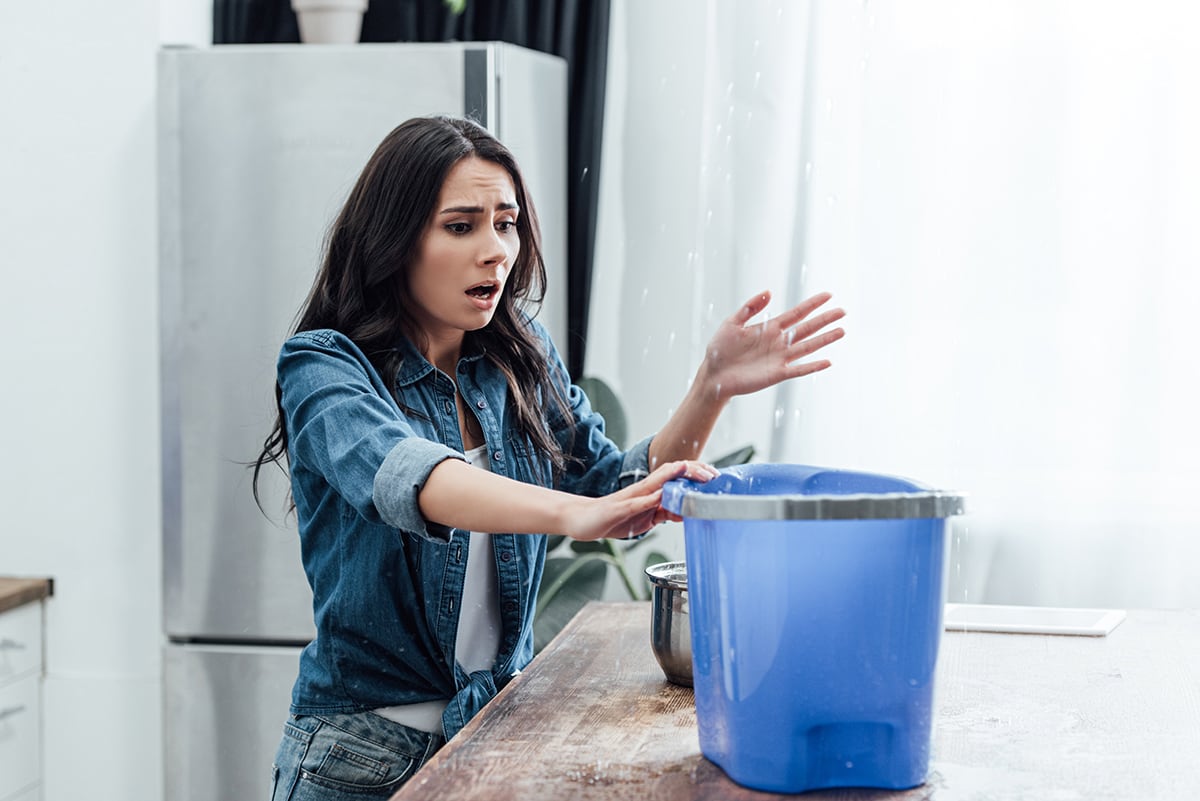
Section III: Immediate Steps To Mitigating Further Damage
Water is one of the most destructive forces on your home and you have to be aware of secondary, long term issues that can occur due to mould, moisture and humidity. On top of the immediate situation you’ll also want to consider what your insurance requires to process a claim. This can be an added consideration when you may already be overwhelmed by the situation. Here’s a checklist you can use to mitigate further damage and stay onside of insurance company requirements:
Step 1: Locate the water source. If it’s an internal problem, fixtures or appliances, turn off the water immediately. Here are a few short videos so you can learn: How to turn off the water from your toilet, your sink or how to turn water off from the street.
Step 2: If it’s safe to do so, remove any undamaged valuables from the affected area but do not remove any damaged items or furniture as this can impact your insurance claim. Please note that our technicians aren’t authorized to handle certain items like firearms.
Step 3: Call First General’s 24-hour phone number (1-778-441-3123) to schedule a FREE inspection. We will dispatch a qualified professional swiftly to your location to complete an assessment.
Section IV: The Water Damage Restoration Process
Once the immediate situation has been contained and you’ve had the damage assessed by a professional the next step is
to restore your property to its original condition. At this stage it’s important to consider which company you will
hire to complete the restoration.
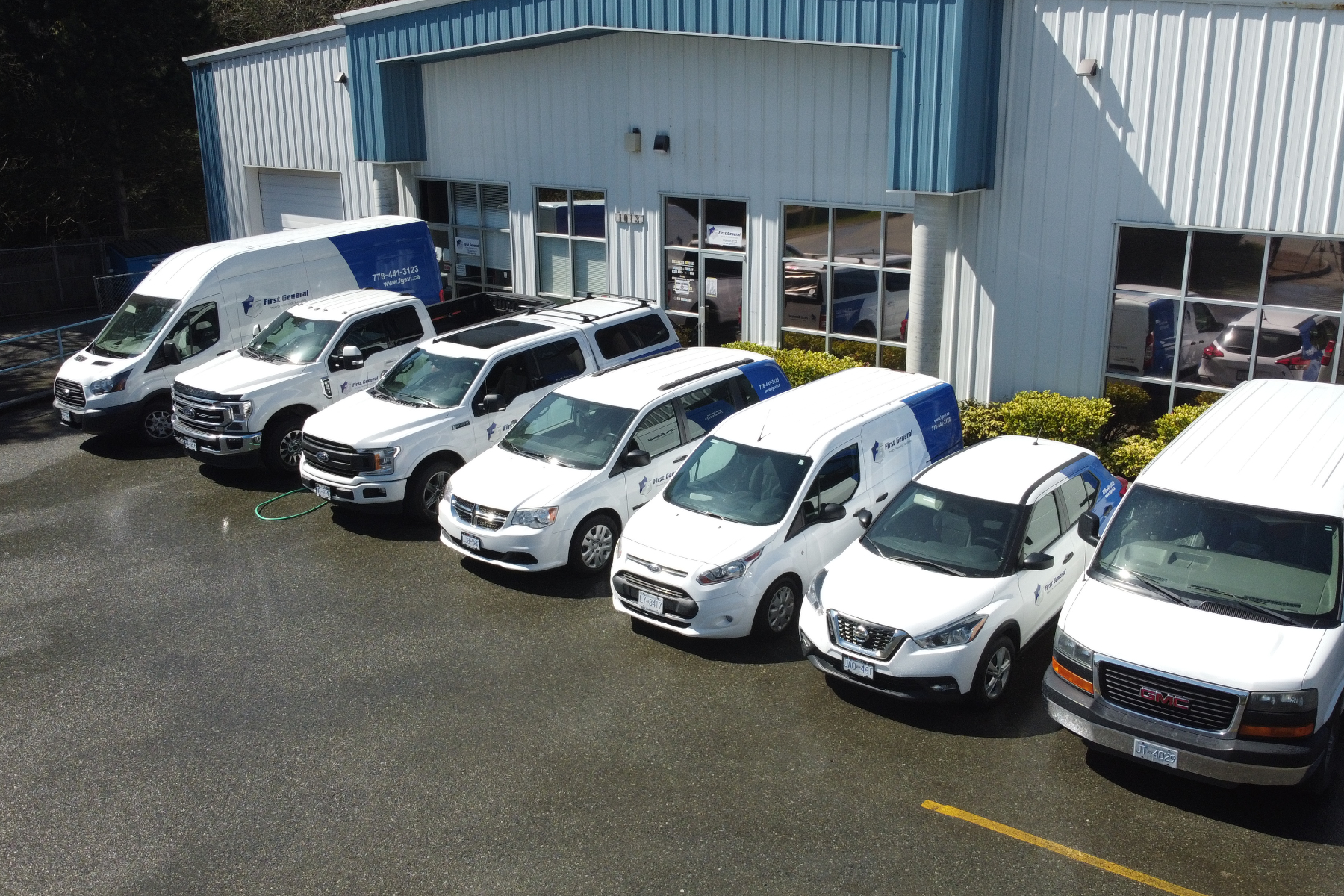
What to look for in a water damage restoration services company
We believe that First General Vancouver Island should be your first call and first choice. However it you choose to consider another provider make sure they are equipped with the following:
- Do they have the technical expertise to complete the cleanup and any carpentry needed for the restoration?
- Technical capacities: Do they use thermal imaging cameras, truck mounted water extraction devices, moisture meters, dehumidifiers, air movers/fans, drying equipment, viking drying systems, air scrubbers, wood floor drying systems and subfloor drying systems?
- Insurance liaison capacities: Do they understand the requirements of your insurance company? Can they
assess the value of, or the cost to replace damage to your insurance company in a professional manner?
Can they return your home to a pre-loss
condition?
Note: First General operates from a place of integrity, by which we must report accurately what we observe whether it is favourable to the homeowner or not. An inspection is an objective process by which we document, photograph, evaluate and report. While we have significant experience, we do not comment on issues of insurance carrier coverage. Insurance coverage has become less standardized than in the past, with limitations on specific types of losses, and exclusions of specific types of losses more common than they have been in the past. We have extensive knowledge in ensuring an accurate and thorough inspection that has earned us the trust and confidence of insurance carriers. - Customer care capacities: Do they handle your possessions with care and empathy? Are they professionals when it comes to punctuality and communication? Do they treat you with compassion and respect, paying special attention to the emotional and mental stress that the water damage restoration process can cause?
Why First General Should Be Your First Choice for Vancouver Island Water Damage Restoration Services
In addition to the technical, insurance liaison and customer care capabilities listed above, here are a few more reasons why you should choose First General to shoulder the responsibility of clean up and restoration services for water damage.
Regional Specialists
We understand Vancouver Island and Vancouver Islanders, and have a long-standing history in the community dating back to 1983. We have specialized knowledge for our local climate and architecture.
Emotional Intelligence
Our team, from ownership to technicians, will compassionately support you through your project. While we provide emergency services on a daily basis, we understand that experiencing water damage in your home can be new and upsetting. Throughout the entire process, we will act with empathy and do our best to accommodate your needs. We care as much about your experience through the restoration process as you do about your home, and will be sure to professionally see your project through to completion.
Customer Feedback
We don’t expect you to only take our word for why First General should be your first choice for assessment, mitigation, and restoration services of water and flood damage. Here’s what Vancouver Islanders just like you have said about our service:
I can't thank First General Services enough for their prompt and efficient response when a burst pipe flooded my home. Their team's professionalism and dedication to restoring my property were impressive. Highly recommended!
Sarah T., Home Owner
Their professionalism, efficiency, and expertise were truly impressive. They restored our property swiftly, allowing us to get back to business without prolonged interruptions. We highly recommend their services to anyone in need of restoration!
Emily D., Business Owner
As a property manager, I've worked with numerous restoration companies, but none compare to First General Services. Their expertise and attention to detail are unmatched. I trust them for all our restoration needs.
Mark R., Property Manager
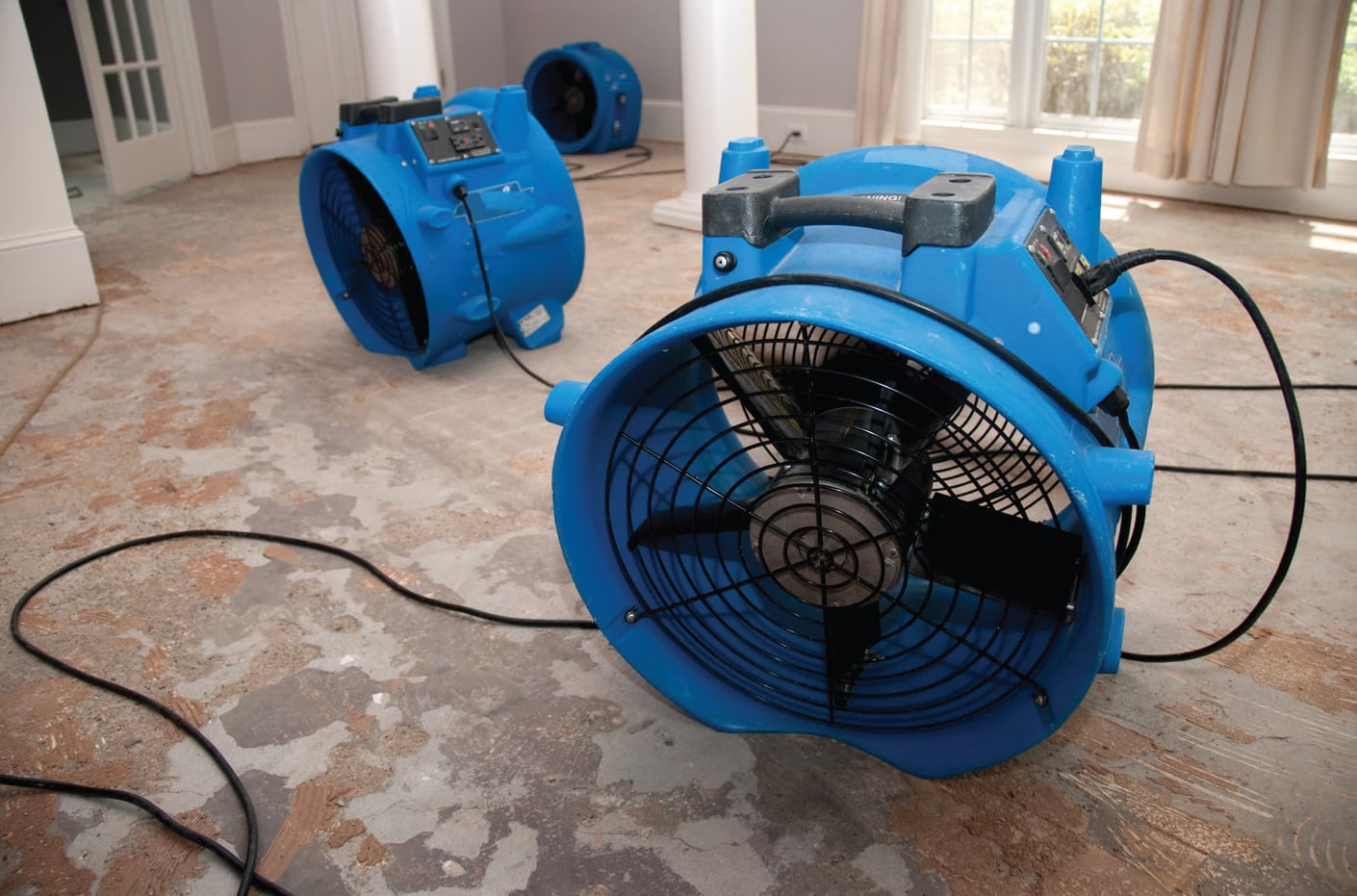
The Process to Restore Your Property to Its Former Glory
The final step in recovering from water damage restoration is to work with a company like First General to deal with the clean up, the insurance process and the repair of your property. Here’s a brief review of the process and what each party’s roles and responsibilities are:
The Insurance Claim Process
Navigating the insurance claim process need not be overly onerous to the homeowner although it needs to be done with a high degree of care. Here’s a list of responsibilities and an outline of how First General works with you and your policy provider:
Insurance Company’s Responsibilities
- Respond to your claim in a reasonable and professional manner
- Once all policies have been adhered to, pay the costs of your claim above the deductible in a reasonable timeframe.
- Return your home to a pre-loss condition.
First General’s Responsibilities
- Facilitate a partnership with you, the homeowner and your insurance company and work together towards a successful outcome.
- Assign a project manager to communicate with your insurance company and keep everyone informed on the progress of the restoration.
- Create and manage a safe job site throughout the water damage restoration process.
- Provide both you and your insurance company all the necessary information and documentation to facilitate a
successful claim including:
- Work authorization
- Content disposal authorization
- Warranty
- Return your home to a pre-loss condition
- Certificate of Completion
Homeowner Responsibilities
- Understand and adhere to your policy’s rules and regulations
- Pay the deductible outlined in the policy
- Select materials for the repair and restoration of the damage
The Restoration Process
With the insurance handled, here’s a list of what happens to ensure your property is returned to its pre-damaged condition and gets you back enjoying your home as quickly as possible.
The Steps First General Takes To Repair and Restore Water Damage In Your Home
Each instance of water damage restoration is unique so we can’t guarantee a specific timeline for everyone. However we will work with you and your insurance company to ensure the job gets done professionally and as quickly as possible.
To ensure this, we will support you through the 3 phases of the restoration process:
Phase 1 - Emergency/Mitigation
- Assign a project manager
- Provide you with a mitigation plan and timeline, including the clean up, drying up process
Phase 2 - Restoration Estimates and Scheduling Work
- Provide you with a reconstruction plan and timeline
- Handle your possessions with care; we will treat your belongings like they are our own
- Provide all documentation to you and your insurance provider upon completion of job
- Communicate the status of your restoration project progress
Phase 3 - Reconstruction Services
- Carpentry and other reconstruction work completed
- Site clean up and safely returning your belongings to their original locations
- Completion of a final inspection to ensure your complete satisfaction
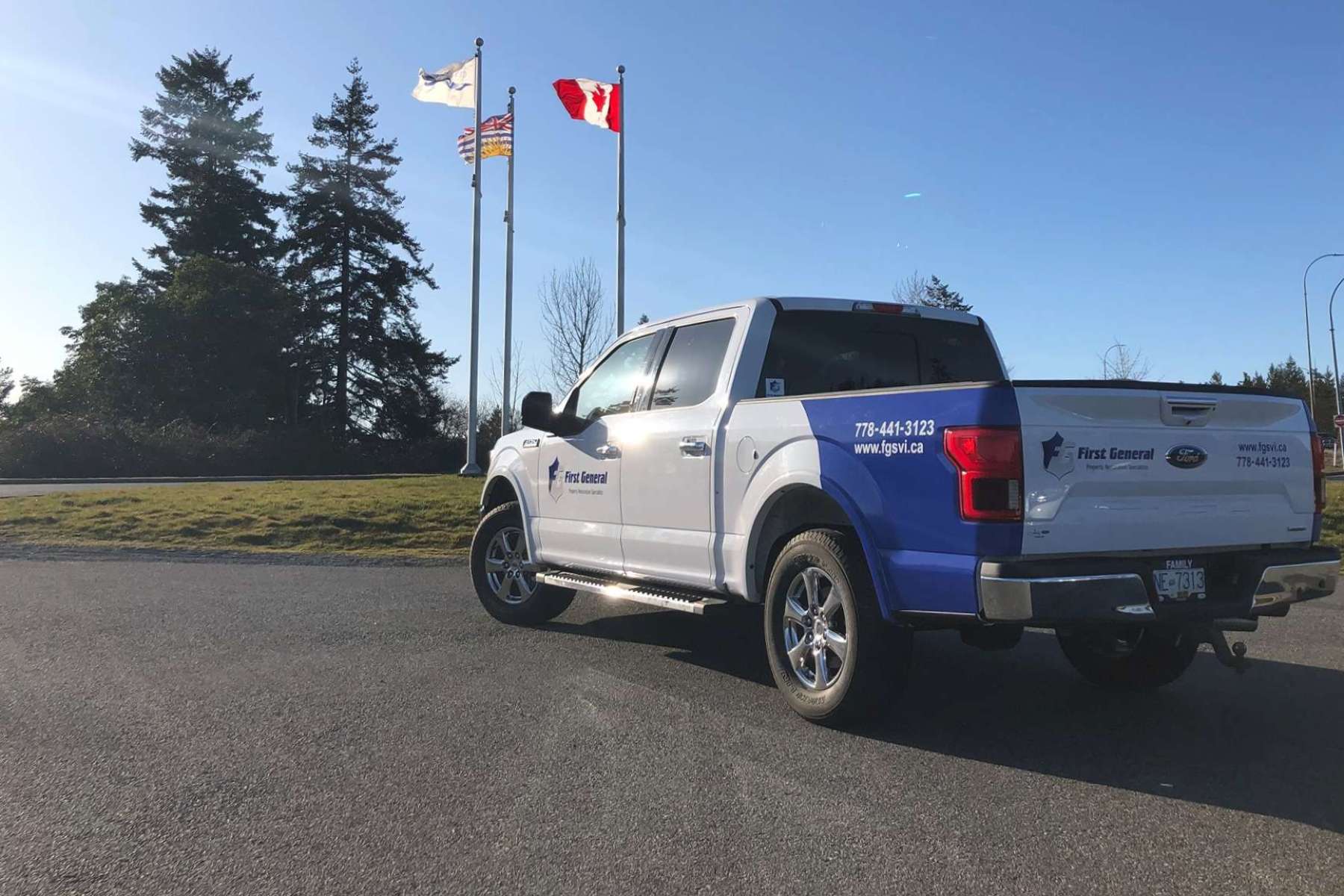
Conclusion
The Ultimate Guide To Preventing and Recovering From A Water Damage Disaster on Vancouver Island is designed to give you all the expert advice you’ll need as a homeowner. From the proactive and practical steps you can take to avoid water damage, to a complete rundown of what to do if damage occurs, we’ve equipped you with over 40-years of wisdom and expertise.
Should you have any questions not answered in this guide please feel free to reach out to us and we’ll be more than happy to answer your questions.
